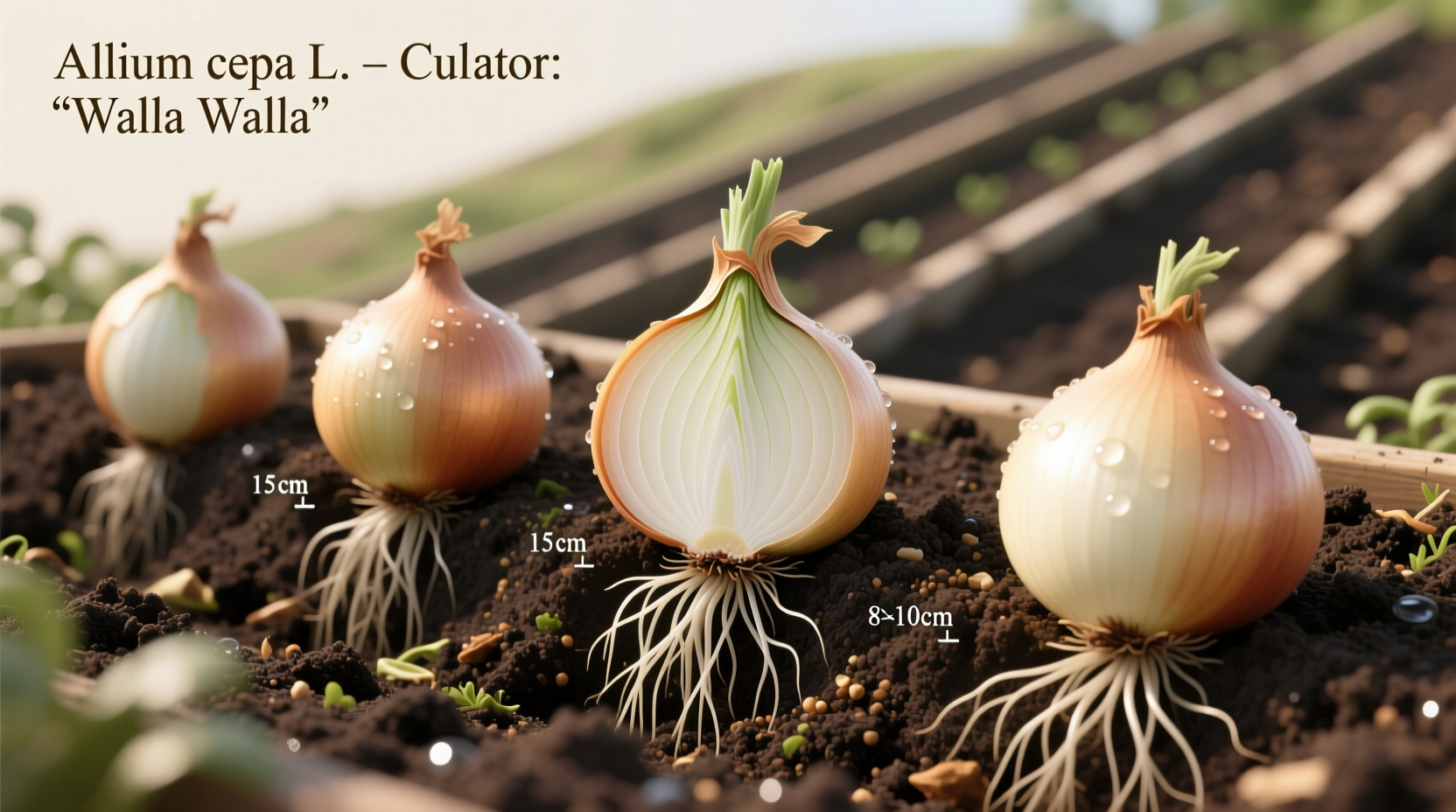Timing your onion bulb planting correctly makes the difference between a bountiful harvest and disappointing results. As a gardener, you need precise guidance based on your specific climate zone and onion variety. This guide delivers actionable planting schedules backed by agricultural research, so you can grow robust onions with maximum flavor and size.
Understanding Onion Bulb Types and Their Requirements
Not all onion bulbs are created equal. Your planting success depends on selecting the right variety for your region's daylight patterns. Onions fall into three main categories based on their day-length requirements:
- Short-day onions (10-12 hours of daylight): Best for southern regions (zones 7 and warmer). Plant in fall for spring harvest.
- Intermediate-day onions (12-14 hours): Suitable for central United States. Plant in early spring.
- Long-day onions (14+ hours): Ideal for northern climates. Plant as soon as soil can be worked in spring.
Choosing the wrong variety for your region leads to poor bulb formation. According to the University of Minnesota Extension, long-day varieties grown in southern regions often produce only small bulbs because they receive insufficient daylight to trigger proper bulbing.
Planting Calendar by Climate Zone
Your USDA hardiness zone determines the optimal planting window. The USDA Plant Hardiness Zone Map provides the foundation for determining your specific planting dates.
| USDA Zone | Last Frost Date | Optimal Planting Time | Special Considerations |
|---|---|---|---|
| Zones 3-5 | May 15 - June 1 | Early April | Plant long-day varieties only; use mulch to regulate soil temperature |
| Zones 6-7 | April 15 - May 15 | March 15 - April 15 | Intermediate-day varieties work best; fall planting possible in zone 7 |
| Zones 8-10 | Rare or no frost | September - October | Short-day varieties only; plant deeper (2 inches) for better heat protection |
Step-by-Step Planting Instructions
Follow these steps for successful onion bulb planting regardless of your region:
- Prepare your soil 4-6 weeks before planting: Onions need loose, well-draining soil with pH between 6.0-7.0. Amend with 2-3 inches of compost and a balanced fertilizer.
- Check soil temperature: Use a soil thermometer to verify temperatures have reached at least 40°F (4°C) at 2-inch depth.
- Plant bulbs with root plate down: Position bulbs with the flat root end facing downward, pointed end up.
- Proper depth and spacing: Plant 1-2 inches deep with 4-6 inches between bulbs in rows 12-18 inches apart.
- Water immediately after planting: Provide 1 inch of water to settle soil around bulbs.

Avoid These Common Planting Mistakes
Even experienced gardeners make these critical errors that reduce onion yields:
- Planting too early in cold, wet soil causes bulbs to rot before sprouting. Wait until soil temperature consistently reaches 40°F.
- Incorrect spacing leads to competition for nutrients. Crowded onions produce small bulbs.
- Planting too deep in heavy soils prevents proper bulb development. Shallow planting in sandy soils causes bulbs to dry out.
- Ignoring day-length requirements results in poor bulb formation regardless of care.
The Oregon State University Extension reports that improper planting depth accounts for nearly 30% of failed onion crops among home gardeners. Their research shows optimal planting depth varies by soil type—1 inch in clay soils, 2 inches in sandy soils.
Troubleshooting Your Onion Crop
Watch for these signs that indicate problems with your planting timing or technique:
- Excessive top growth with small bulbs: Likely planted too early or using wrong variety for your day length.
- Bulbs forming too early (before adequate top growth): Soil temperature fluctuations or incorrect variety.
- Rotted bulbs: Planted in cold, waterlogged soil or damaged during planting.
- Pale, weak growth: Insufficient sunlight or overcrowding.
If you notice these issues, adjust your approach for the next planting cycle. Remember that onions need 90-120 days from planting to harvest, depending on variety. The University of Wisconsin Extension recommends keeping a garden journal to track planting dates, weather conditions, and harvest results to refine your timing each year.
Maximizing Your Onion Harvest
For the best results, follow these professional tips:
- Apply 2-3 inches of straw mulch after planting to regulate soil temperature and moisture
- Fertilize with nitrogen-rich fertilizer every 3 weeks until bulbing begins
- Reduce watering as bulbs begin to mature to improve storage quality
- Stop watering completely 2-3 weeks before harvest for best storage results
Understanding when to plant onion bulbs for your specific region transforms your gardening results. By matching your planting schedule to your climate zone and selecting appropriate varieties, you'll enjoy larger, more flavorful onions with better storage capabilities. Remember that soil preparation and consistent care after planting are just as crucial as getting the timing right.











 浙公网安备
33010002000092号
浙公网安备
33010002000092号 浙B2-20120091-4
浙B2-20120091-4